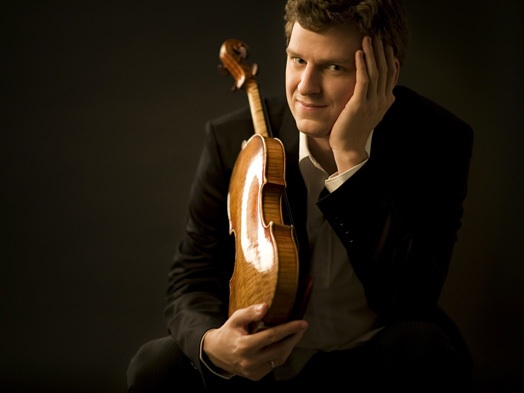
Canadian violinist James Ehnes and American composer John Adams, as well as excellent playing by the Toronto Symphony Orchestra under music director Peter Oundjian, made for a stellar season-opening concert at Roy Thomson Hall on Thursday night.
- Classical Music 101: What Does A Conductor Do? - June 17, 2019
- Classical Music 101 | What Does Period Instrument Mean? - May 6, 2019
- CLASSICAL MUSIC 101 | What Does It Mean To Be In Tune? - April 23, 2019
The programme, which repeats on Saturday, is a strange match musically. But mixing a 19th century opera overture (from Giuseppe Verdi’s La forza del destino) with a warhorse solo showcase from the same period (Johannes Brahms’ Violin Concerto) and a late-20th century masterwork (Adams’ Harmonielehre, from 1985), ensured there was something to hear for nearly every taste.
With characteristic clarity, Oundjian made nice work of the Verdi and the accompaniment of the Brahms concerto.
The really satisfying orchestral meat of the evening came last with Harmonielehre, but not before Ehnes has worked his stunning technical magic on the Brahms piece.
It’s hard to imagine any other violinist being able to toss off the long, arcing musical lines and myriad virtuosic flourishes Brahms laid out in 1878 for his friend, the legendary violinist Joseph Joachim, with as much aplomb.
Ehnes probably does himself a disservice by remaining ever calm, cool and composed, because the sound that comes out of his priceless 1715 Stradivarius is as close to flawless as one gets in the ever-imperfect world of live performance. He also manages to tease fine nuance and subtle graduations of dynamics and tone along the way.
The Roy Thomson Hall audience loudly leapt to its feat in gratitude, to which Ehnes responded with the Gigue from J.S. Bach’s Partita No. 2 for solo violin. This was also so smooth, so assured, that Ehnes had again made the execution look too easy.
For me, the really fascinating piece of the evening was the three-movement Adams piece. In form it is a cross between a three-movement symphony and an extended tone poem. In its details, though, it remains a revolutionary work (as is so much else Adams has written over the past 27 years) in that it owes as much to traditional tonal settings as it does to a variety of minimalist experiments.
But this is not minimalism in any real sense, as Adams piles on small repeated motifs, out-of-phase rhythms and even cantus firmus-style long notes into a big sonic stew that encompasses the whole orchestra as it morphs shapes, textures and tonalities.
It is as if Adams intends for us to hear the consequences of the mix, the strange resultant vibrations and metamorphoses, rather than the individual notes the musicians are playing. It is the music of intended consequences.
The Toronto Symphony and Oundjian laid it all out clearly and with enough precision to convey the full impact of the score. It’s am impact that’s intellectual, emotional and visceral, making for a particularly deep and memorable night of music.
For programme details and ticket information for Saturday’s performance, click here.
John Terauds
- Classical Music 101: What Does A Conductor Do? - June 17, 2019
- Classical Music 101 | What Does Period Instrument Mean? - May 6, 2019
- CLASSICAL MUSIC 101 | What Does It Mean To Be In Tune? - April 23, 2019



